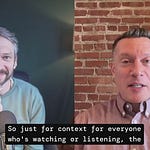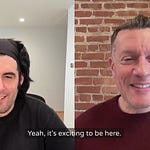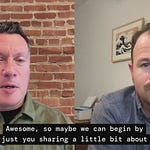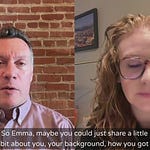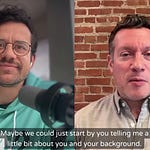When Héctor Reyes first joined the Coda (now part of Grammarly) team, he wasn’t setting out to become a community leader. But like many of the best community pros, he found himself there by listening, learning, and building trust along the way. What started as a pivot from finance into tech turned into a deep dive into the emotional and operational work of community building—and a belief that meaningful connections aren’t just possible in product communities, they’re essential.
In this episode of Community Codebreakers, Héctor shares what it really takes to create community programs that feel human. We talk about the lessons he’s learned from working at the intersection of product, partnerships, and community, how his early experiences on Slack and Reddit shaped his thinking, and why feedback (even when it’s messy) is always a gift.
We also dig into the challenges—like how to redirect conversations that veer off track, how to create a sense of safety and warmth for new members, and what it means to balance business outcomes with emotional intelligence. Whether you’re just starting your community program or thinking about how to evolve what you’ve already built, Héctor’s perspective is full of thoughtful, real-world insight.
From emotional labor to business alignment
One of the most compelling throughlines in Héctor’s story is the idea that community is about people first—and that emotional connection is just as important as engagement metrics. He talks about the value of creating memorable experiences that stick, and how understanding user motivation helped him reshape Coda’s community program to meet people where they are.
But this isn’t just a story of warm-and-fuzzy community vibes. Héctor also shares how he approached stakeholder alignment, used community feedback to inform product thinking, and carefully restructured conversations in the Coda community to reflect evolving goals. Throughout, he reminds us that good community work requires both heart and strategy—and that great communities aren’t built overnight.
Key Takeaways
Community is about more than platforms—it’s about time and space for connection. Don’t confuse a tool for a strategy.
Deep engagement requires emotional awareness. You can’t fake care. Creating trust means investing time, building safety, and understanding what motivates people to show up.
Feedback is a gift—even when it’s noisy. Héctor shares how listening closely and surveying members helped guide meaningful program changes at Coda.
Community isn’t “extra.” It’s a product input, a partner to GTM, and a trust-builder that pays off long-term.
Redirection is a skill. When product support questions start flooding your channels, you don’t have to shut them down—just guide them to the right place and give your community a better experience.
Internal buy-in is part of the job. Bringing stakeholders along the journey helps community become a strategic function—not just a feel-good initiative.
Decoded Insight
If you want a community that lasts, build it with empathy, not ego. The best programs don’t just scale—they make people feel seen.
Want to connect with Héctor?
You can find him on LinkedIn. And if this episode resonated with you, leave a comment, share it with a friend, or drop your own community lesson in the thread.
Timestamps
00:00 – Introduction to Héctor's Journey
02:59 – Defining Community and Memorable Experiences
05:50 – The Genesis of Coda's Community Program
09:14 – Recent Updates to the Community Program
12:01 – Community Structure and Dynamics
15:01 – Engagement Strategies and Initial Launch
17:59 – Redirecting Conversations in the Community
21:11 – Onboarding and Engagement Activities
24:09 – Feedback Mechanisms and Community Insights
27:05 – Understanding Community Feedback and Engagement
29:17 – Survey Strategies for Community Insights
30:54 – Internal Communication and Stakeholder Engagement
34:25 – Partnership Perspectives in Community Building
39:24 – Future Directions for Community Growth
44:55 – Advice for Starting a Community Program
49:18 – Navigating Professional and Personal Boundaries




